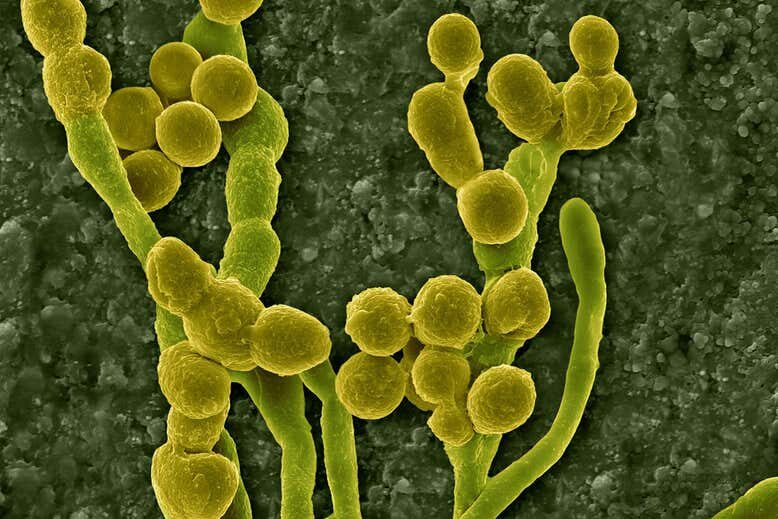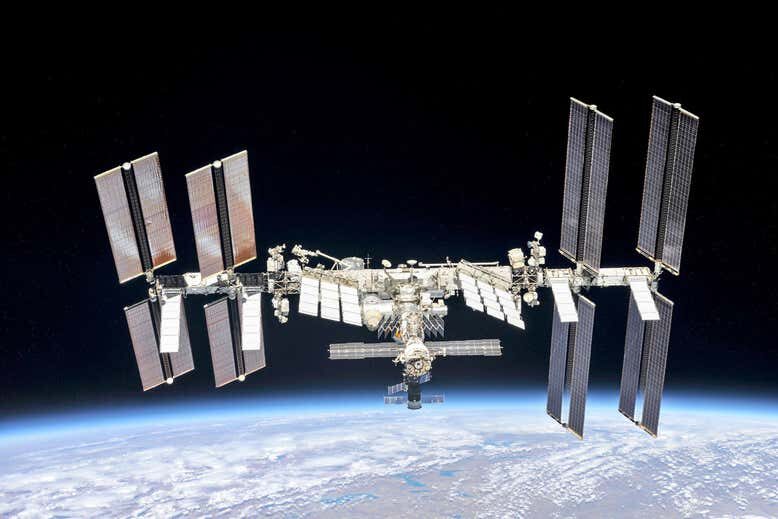Exposure to cosmic rays poses a major health risk to astronauts leaving Earth's protective atmosphere. Shields can be made out of stainless steel and other materials, but they must be shipped from Earth, which is difficult and costly.
Xavier Gomez and Graham Shunk came up with the idea of growing radiation shields on Mars out of living organisms while they were students at high schools in North Carolina in 2018.
The pair found research showing that a fungus called Cladosporium sphaerospermum that was originally isolated from mould growing in the ruined Chernobyl nuclear reactor could absorb high levels of radiation, and wondered if it could function as a space radiation shield.
After winning a space innovation competition, they were able to send a petri dish containing the fungus to the ISS in December 2018 for 30 days to test their idea.

The results are "really good", but there are some technical challenges that need to be addressed before the fungus could be used as a radiation shield, says Nils Averesch at Stanford University in California, who is now collaborating with the students.
The fungus couldn't be grown outdoors on Mars because it gets too cold, but it may be possible to incorporate it inside insulated building walls, says Averesch. People on Mars would also need to find a way to water the fungus, potentially using water extracted from ice at the poles, he says.
Another option may be to extract the melanin pigment that the fungus uses to convert radiation into chemical energy and incorporate it into spacesuit fabric or other materials, says Shunk.
Researchers at Johns Hopkins University in Baltimore, Maryland, have recently sent a material made of plastic mixed with melanin extracted from another radiation-loving fungus found at Chernobyl - Cryptococcus neoformans - to the ISS to see how well it blocks space radiation.
Averesch believes that fungus-inspired radiation shields have excellent potential. "What makes the fungus great is that you only need a few grams to start out, it self-replicates and self-heals, so even if there's a solar flare that damages the radiation shield significantly, it will be able to grow back in a few days," he says.
Reference: bioRxiv,doi: 10.1101/2020.07.16.205534




: How did they ever make a mould big enough to cast Chernobyl?:
"How did they ever collapse it down enough to launch on a rocket?" (Source headline error: they meant 'mold' as in a fungus.) Kudos, kids!
RC